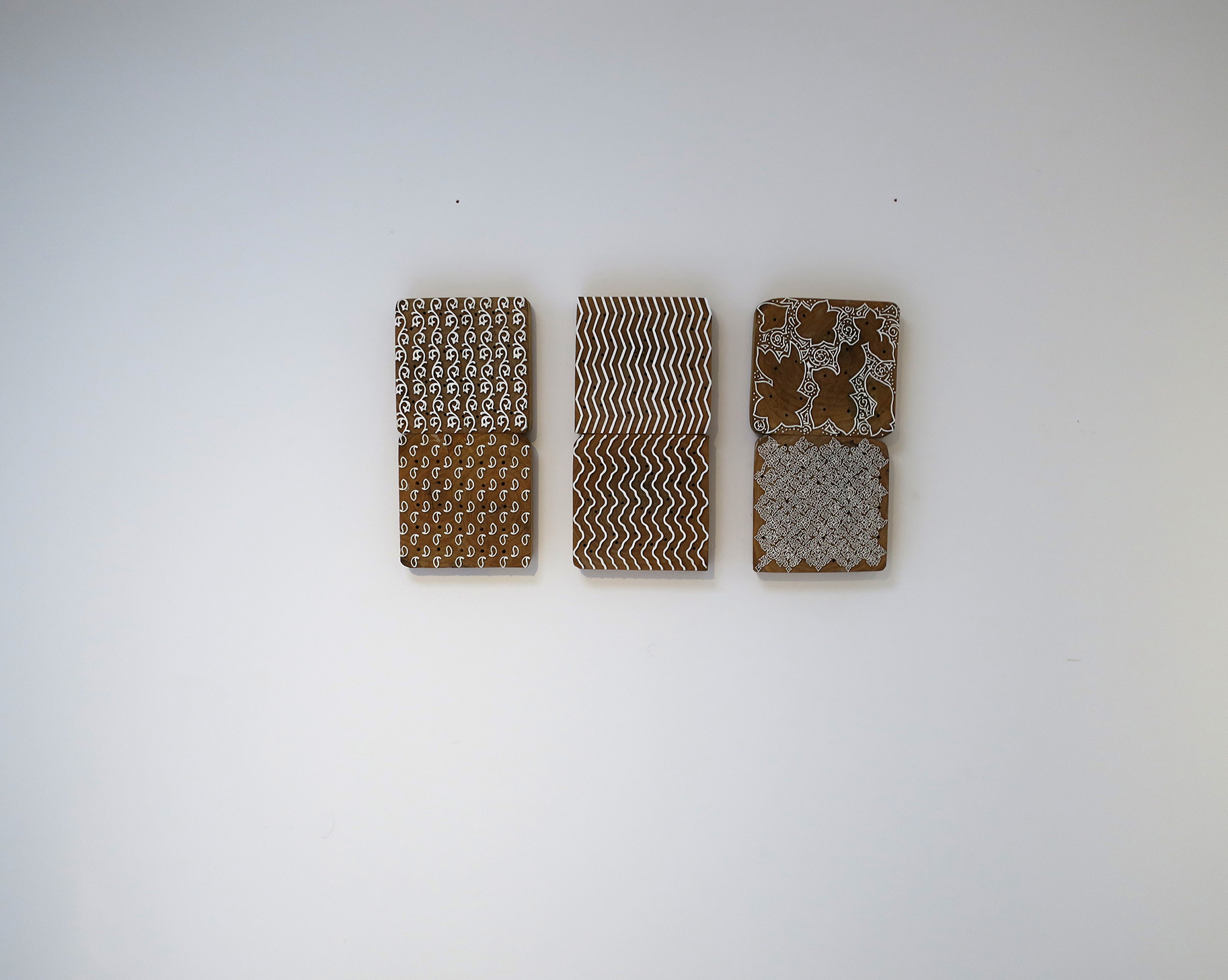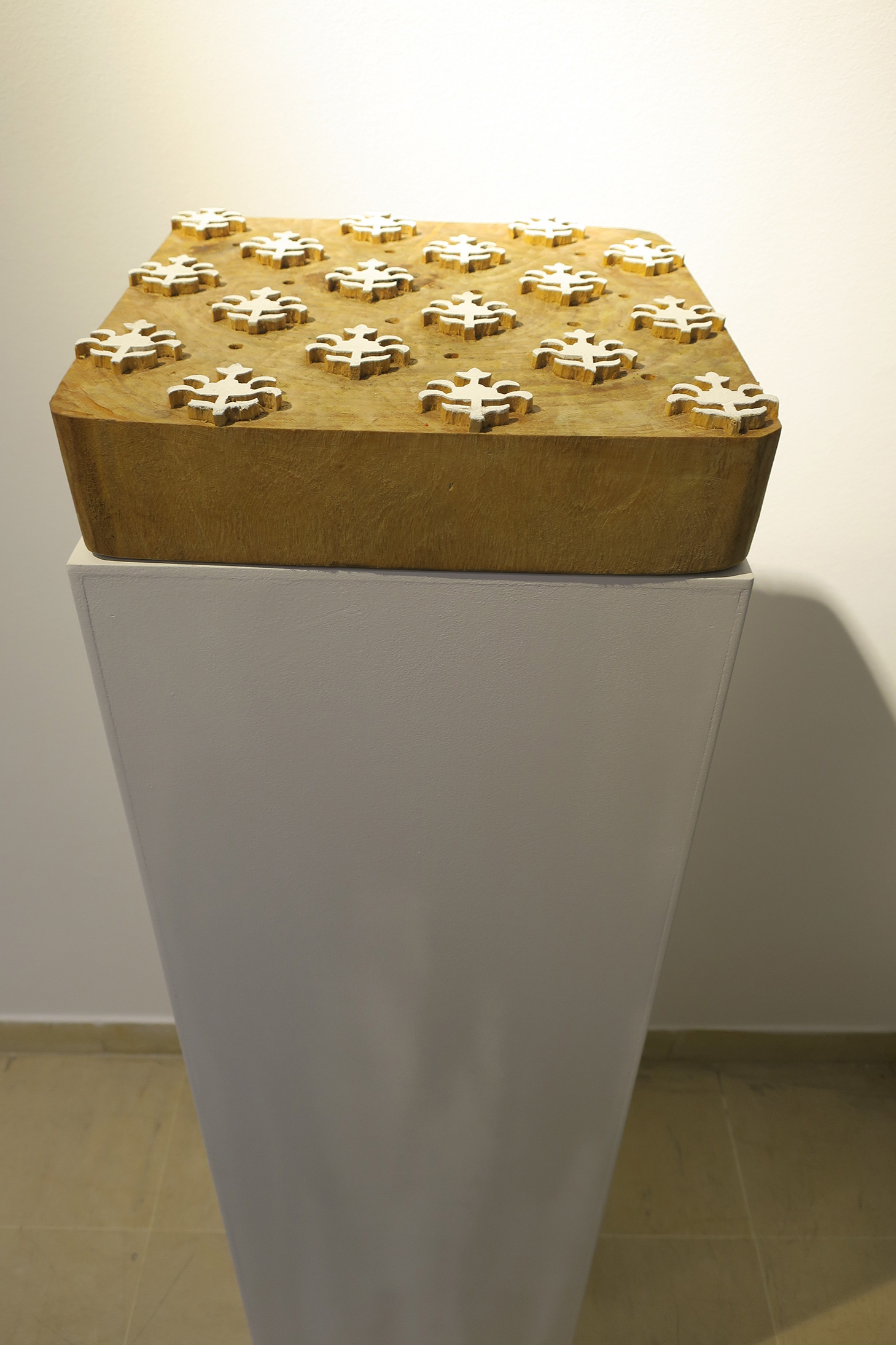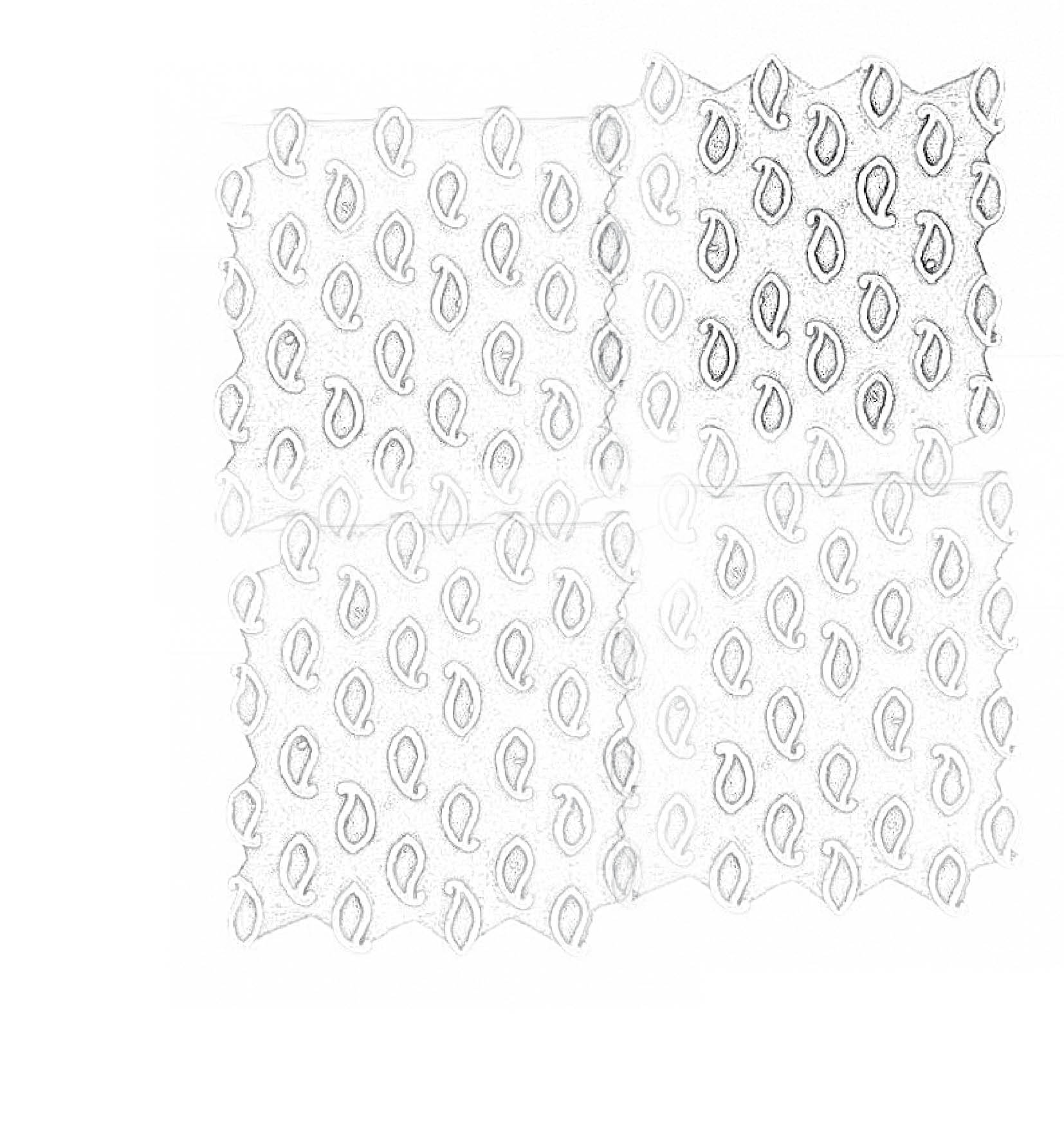|
Les petites mains
Les Petites mains sont des totems : ces objets deviennent une représentation de l’ancêtre, en sont l’emblème, l’ancêtre étant le manuel, celui qui par sa main transforme le vide en une dessin que l’on porte. Ancêtre étant l’antérieur, ce qui nous précède. Même si désormais restent quelques manuels, leur rareté et le fait que l’on extrait une image d’eux qui devient un simulacre, une représentation commerciale alors qu’e réalité bons nombre de tissus sont désormais usinés, les fait basculer à ce statut d’ancien, d’emblème d’une époque, d’un passé, d’une définition du travail qui désormais a perdu ses attributs initiaux.
Les Petites mains sont une tentative d’accélérer la muséification, ce qui est muséeifié est mort, l’objet en soit: un tampon en bois hors d’usage car trop lourd, n’est pas sans lien avec l’idée du ready-made: l’oeuvre d’art fabriquée non par la main de l’artiste. Un objet usuel qui se transforme par le geste que pose l’artiste: c’est à dire l’exposer en oeuvre d’art. On détourne ici deux emblèmes : l’ancêtre et le ready-made dans un geste qui fait oeuvre. Ce geste à minima implique ces petites mains, fait image d’une pratique quasi ancestrale de la fabrication du beau, ici les petites mains sont des ancêtres et les tampons des totems. Ces petites mains sont des témoins d’une position commune aux arts : élever au rang de figure le commun qui disparait, faire trace et archive d’un outil bientôt obsolète, d’un temps bientôt révolu. Les Petites mains are totems: these objects become a representation of the ancestor, are its emblem, the ancestor being the manual, the one who by his hand transforms the void into a drawing that one wears. The ancestor is the former, which precedes us. Even if here there are a few craftsmen, their rarity and the fact that one extracts an image that becomes a commercial representation whereas the reality many fabrics are now machined, makes them switch to this status of old, an emblem of an era, a past, a definition of work that has now lost its original attributes.
Les Petites mains are an attempt to accelerate the museification, what is museified is dead, the object in itself: a woodblock out of use because too heavy is not unrelated to the idea of ready-made: the work of art made not by the hand of the artist, a usual object that is transformed by the gesture that the artist makes, that is to say to expose it asa work of art. Here one diverted two emblems: the ancestor and the ready-made or the gesture at least of an artist who makes work. Here this minimal gesture involves these Petites mains, an image of an almost ancestral practice of the manufacture of beauty, here the Petites mains or the workers become ancestors and woodblocks totems. Les Petites mains are witnesses to a position common to the arts: to elevate to figure the common that disappears, to trace and archive a tool soon obsolete, of a soon-to-be-gone era. |
 Les petites mains 1, 2, 3
2019 Carved woodblock 60 x 30 x 6 cm each  Les petites mains 4
2019 Carved woodblock 60 x 30 x 6 cm  Les petites mains, esquisse
2019 |